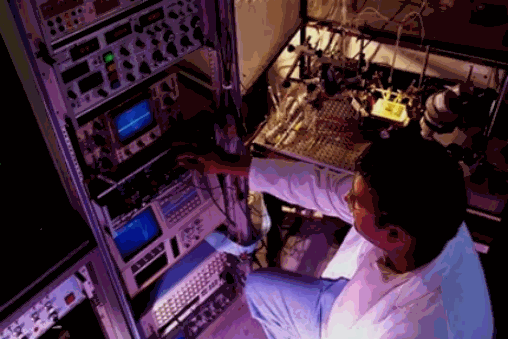
Sleep deprivation may make emotions hard to control
Twenty-six adults were assigned either to a sleep deprivation treatment for 35 hours or to a normal sleep treatment, in a study performed at UC Berkeley and recently published in Current Biology.
As the participants looked at 100 different images, their brains were scanned using functional magnetic resonance imaging. The images ranged from emotionally neutral to negative images depicting things such as mutilated bodies.
According to the imaging, the amygdalae in the sleep deprived group reacted 60 percent more than in the normal-sleep group. The amygdala is the area in the brain responsible for processing emotion. (webmd.com)
CD players could be used as laboratory tools
CD players use lasers to scan either CDs or DVDs for microscopic bumps that encode sounds and images. They work by detecting whether light is reflected or not. Researchers at Polytechnic University of Valencia in Spain reasoned that the same technology could be used to detect the presence or absence of chemicals in laboratory samples instead of using portable microarray detectors which cost $40,000 to $80,000.
By adding extra sensors to detect changes in the intensity of light, the CD players were able to detect concentrations of pesticides as low as 20-billionths of a gram per liter, a level of sensitivity comparable to that of current lab scanners. Up to 300,000 samples could be put on a single blank CD. The results of the experiment are published in Analytic Chemistry. (sciencenews.org)
Coal power plants rejected in Kansas, Fla.
The Kansas Department of Health and Environment rejected permits for two 7,000-megawatt coal-fired power plants proposed by Sunflower Electric Power Corporation. The decision is one in a string of many decisions made since the Supreme Court decided in April that carbon dioxide qualifies as an air pollutant under the Federal Clean Air Act.
In Florida, four separately proposed coal-fired power plants were rejected by state authorities or were withdrawn.
As carbon capture technology becomes more affordable, coal may once again become a practical option. Selective filters could be installed in either the smoke stacks of the power plants or in the combustion cycle of the power plant. Once the carbon gas is captured, it is compressed and then pumped into the ground as a liquid. Currently such technology increases the price of building a coal-fired power plant by 60 to 70 percent.
Dinosaur footprints found in Australia
Twelve-foot tall, warm-blooded, carnivorous dinosaurs roamed southern Australia 115 million years ago, when the continent was joined to Antarctica, according to Australian paleontologists who recently found three fossilized footprints along the south shore of Australia, near Victoria. Each footprint was approximately 14 inches long and each had at least two or three partial toes.
According to researchers, the environment that the dinosaurs inhabited could range from -22 degrees to 68 degrees Fahrenheit. 120 million years ago, the supercontinent called Gondwana, made up of South America, Africa, India and Antarctica began to break apart. Fifty million years ago the Australian continent broke apart from Antarctica and began to move northward.

No comments:
Post a Comment